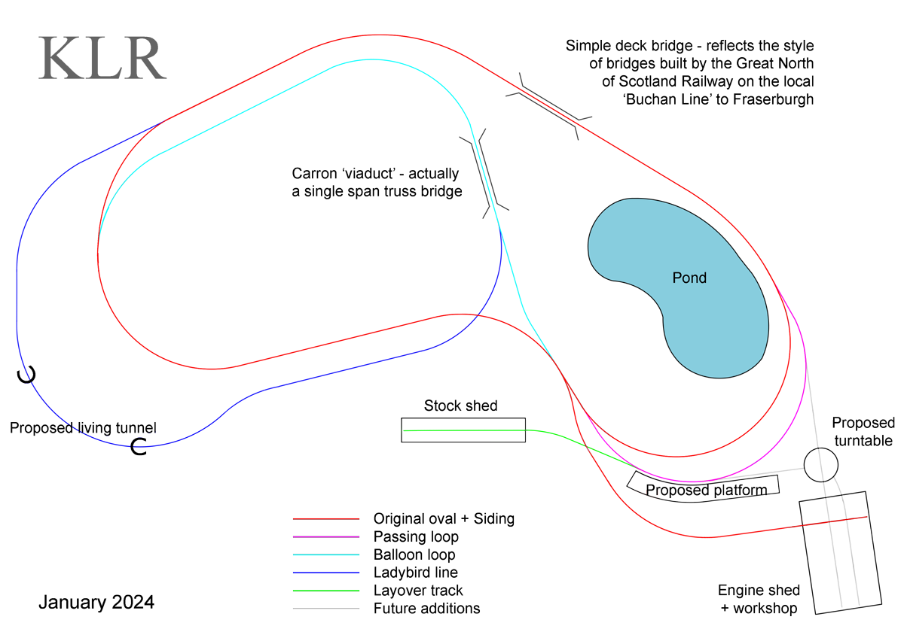Track Plan

How the plan evolved
Initially the circuit was a simple oval with a siding to the engine shed/workshop. A passing loop was added, which allowed trains to pass each other or locomotives to run around a train and pull it from the other end. Later this would facilitate various shunting movements.
The next section to be built was the track across the truss bridge to form a balloon loop, which allows whole trains to reverse their direction of travel around the main circuit. The last major track work to be completed was what has become known as 'the ladybird line' (because of the large number of ladybirds seen in this area), which effectively extended the oval 'main line', making it into a sort of figure of 8 folded over on itself to give a journey approaching twice the length of the original oval line.
For now, a portable 'layover' track is used to access our auxiliary stock shed as required. You can read more about this alternative to conventional points or switch track towards the bottom of our 'Turnouts' page. In the future we aim to add a turntable and access tracks to the engine shed/workshop through what is currently the end wall.
We are gradually adding landscaping, planting and features (such as the bridges and proposed tunnel) to enhance the journey around the railway.
Operation
The track plan is now convoluted enough to make it not immediately obvious where a train is heading and combines a continuous run with a return loop. This allows trains to follow a variety of routes, giving plenty of interest using a relatively short length of track.
For example, using the station as a terminus we can follow the 'main line' for a complete circuit in a clockwise direction around the whole looped 8, then traverse the balloon loop to reverse the train before travelling around the whole main line again in the opposite direction to arrive back where we started. The locomotive can then use the passing loop (and turntable, once it has been built) to run around it's train and repeat the process. This gives a surprisingly long 'out and back' journey (approaching a quarter of a mile) in a fairly small space.
Alternatively it should be possible (with careful timing and at least some sort of single line 'token' system in operation) to have two trains running in opposite directions at the same time.